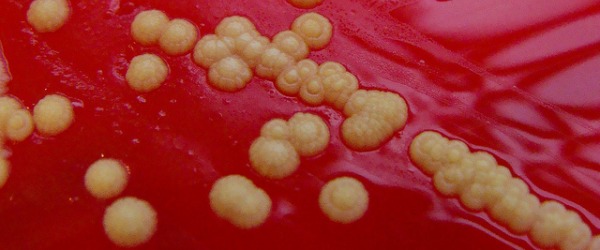In this article, you will be introduced to the world of fluorescent western blotting. Firstly, we will compare fluorescent and chemiluminescent western blotting. Then, we will learn how infrared fluorescent western blotting can give you truly quantitative and reproducible results. Lastly, we’ll look at the many advantages of fluorescent western blotting, including the possibility to multiplex. Importantly, this technique can save you time and precious samples.
First, let’s have a quick recap! Western blotting is an efficient technique to assess the presence and abundance of proteins of interest. Protein separation by electrophoresis followed by western blotting may offer more precision than other antibody-based detection assays (e.g., ELISA). This is because even if the primary or secondary blotting antibodies cross react with non-target proteins, the signal you want (i.e., target antigen) can usually be differentiated from the noise (non-specific binding) based on molecular weight.
Advances in reagent and imaging technologies have moved western blotting from a qualitative assessment of target proteins to a quantitative measurement of target protein levels, which is useful in broad fields including cellular biology and antibody research. The improved precision is partly down to improved detection methods. That is, a move from chemiluminescent to fluorescent detection.
Fluorescent Western Blotting – Here Comes the Science Part!
In chemiluminescent blotting the signal obtained is variable and generally regarded as semi-quantitative. However, the signal obtained in fluorescent blotting is a static value proportional to the abundance of target proteins in complex with fluorophore-bound antibodies.2 Table 1 below outlines the main differences between chemiluminescent and fluorescent western blotting.
Chemiluminescent Detection | Fluorescent Detection | |
Working Principle | Secondary antibody labelled with enzyme (e.g. HRP or AP) | Secondary antibody labelled with fluorophore |
Detection Method | Film exposure (more common)/Digital Imaging | Digital imaging (Laser Scanning Imager) |
Multiplexing Capability | No | Yes |
Sensitivity | +++ | +++ |
Signal Stability | Hours | Weeks to Months |
Linear Dynamic Range | 15-fold (Film Detection), 3,000-4,000- fold (Digital Imager) | >4,000-fold |
Quantitative Measurement | Enzymatic signal is variable and only semi-quantitative | Fluorescent signal is static and quantitative |
Substrate | Luminol | No substrate needed |
As mentioned in Table 1 above, fluorescent western blotting uses a secondary antibody labeled with a fluorophore. The fluorophore emits light only when excited with light of the appropriate wavelength. As a result, fluorescent blotting provides quantitative and consistent results across repeat experiments. However, the considerable membrane autofluorescence in the visible fluorescence region often results in low signal-to-noise ratios.
Furthermore, charged-coupled device (CCD) cameras, which are often used for fluorescence signal detection, cannot amplify weak signals to detect lowly expressed proteins. These two issues may limit the use of fluorescent western blotting.
Fortunately, the lack of sensitivity in fluorescent western blotting has been overcome by the use of a two-color detection system with near-infrared (IR) dye. Thanks to the lower background fluorescence in the infrared region, the infrared fluorescent western blot provides up to 200-fold greater sensitivity than protocols using visible fluorophores. This increased sensitivity provides many important advantages over chemiluminescent western blots as outlined below.
Advantages of Infrared Fluorescent Western Blotting
1. Comparable and Even Superior Sensitivity to Chemiluminescence
IR-fluorescent blotting has proven to be more sensitive than chemiluminescent blotting.2 This is because the low background fluorescence on the membrane in the IR region yields a high signal-to-noise ratio. A laser scanning imager equipped with a photomultiplier tube (PMT) images the blots and can amplify a weak signal by several orders of magnitude.
2. Increased Quantification Accuracy Through Multiplexing
The use of a two-color detection method allows simultaneous detection of two antigens on the same blot. For example, you can analyze your protein of interest and normalize it to a loading control/housekeeping protein (e.g., GAPDH, actin) without the need to strip/re-probe blots or run a separate gel. As a result, your quantification will be more accurate.
3. Broad Linear Dynamic Range for Quantitative Measurement
To ensure reliable quantitative measurements, the signal you obtain from a western blot must be within a linear dynamic range. This means that the signal intensity is linearly correlated with target protein abundance. In other words, a two-fold increase in the signal intensity means a two-fold increase in target protein levels. The static fluorescent value obtained through the laser imager is intrinsically quantitative. This is because the fluorescence intensity is proportional to protein abundance over several orders of magnitude.1 This provides a broad range of linearity. You can quantify both low- and high abundance proteins on the same setting without worrying about signal saturation or being outside the linear range.
In contrast, the kinetic enzyme-substrate reaction and signal saturation on the X-ray film restrict the linearity of chemiluminescent detection to a much smaller range. You often need to try out various exposures to get the “right images” for differentially expressed proteins. This is to ensure the signal captured is within the linear range.
Bear in mind that you may need to carry out antibody optimization and antibody validation when switching to a fluorescence detection method. This is because fluorescence detection offers greatly increased sensitivity over chemiluminescence detection, and the risk of detecting non-target proteins may be higher. Parameters that may need to be optimized include working antibody concentration, length of incubation, washing steps and type of wash solution. You can carry out antibody validation in a number of ways, e.g. testing different sample types (e.g. different tissues or cell lines) and/or RNA knockdown. Consult your antibody supplier’s guidelines for help in choosing an antibody validation protocol.
4. Consistent and Reproducible
The fluorescent signal is a static value depending solely on the amount of target antigens, whereas many variables influence the chemiluminescent signal obtained through film exposure. Some variables (e.g., enzymatic-substrate reaction) are hard to control leading to inconsistent and irreproducible results. Schutz-geschwender et al. (2004) report much smaller standard deviations between experimental replicates in fluorescent western blotting than in chemiluminescent detection.2 Therefore, to ensure reproducibility and accuracy of your western blot results, IR fluorescent western blot is the way to go.
5. Extended Signal Duration
Fluorescent signals are extremely stable. You can store your blot in the fridge and image it later when you are ready. In contrast, if you are performing chemiluminescent western blotting, you often need to start the imaging right away. This is to avoid reductions in enzyme activity.
Fluorescent Western Blotting: in a Nutshell
It is becoming more and more common for journal editors and reviewers to request quantitative western blot data. In addition, there is an urgent call to improve reproducibility in western blotting within the scientific community. As I have outlined in this article, the IR fluorescent method has many advantages over chemiluminescent methods. Not only can it save you time, but it also provides you with high-quality, publishable and informative results.







